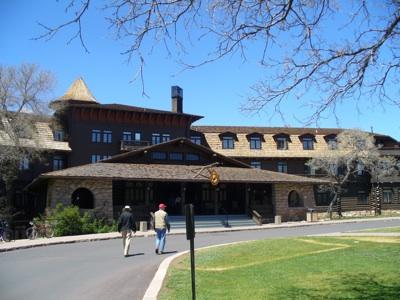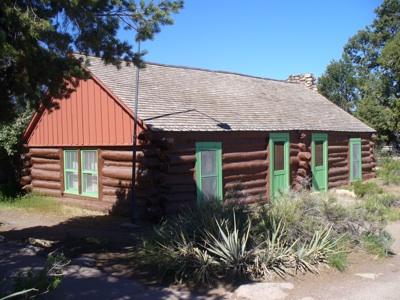
Investments concessionaires have made in the El Tovar Hotel and other lodging properties and restaurants on the South Rim of the Grand Canyon have created financial problems for the Park Service/David and Kay Scott
A problem roughly a century in the making that left Grand Canyon National Park in a nearly $200 million hole is impacting parks from coast to coast, with superintendents forced to find programs and projects they can postpone, cutback, or simply cut.
Some parks are reducing visitor services, including safety programs, as well as resource protection programs due to the National Park Service's move to create a $75 million pool to help Grand Canyon officials level the playing field for companies interested in running concessions at the park.
All told, 88 units of the National Park System were tasked to contribute a combined $49.6 million (the balance came from the Park Service's Washington, D.C., headquarters). The parks received notice in early August that all available balances in their concessions accounts would be taken to help Grand Canyon pay down the leaseholder surrender interest ("LSI," previously called possessory interest) that Xanterra Parks & Resorts had accumulated over the years by investing in facilities on the park's South Rim.
Legislative authority exists to allow the Park Service to make such a demand on the individual parks. Down the road, the parks are expected to be paid back for their contributions to Grand Canyon, though the exact time frame is unclear.
"It's my understanding that this is a loan and we will at some point get these funds returned," said one park official, who spoke to the Traveler on the condition they not be identified, as top Park Service officials had maintained the details of the program were "confidential financial information."
"The law certainly allows the Service to do this, and I get that we're all part of one system," the park official said. "Since this happened suddenly, we're needing to regroup quickly. We had planned to obligate these funds this fall to accomplish quite a few projects that are important to resource protection, visitor services, and interagency relationships."
On top of the park financial problems, the Grand Canyon matter led Xanterra Parks & Resorts to file a lawsuit this week against the Park Service, claiming its concessions decisions at the park were arbitrary and capricious and would be damaging to the concessions business overall and adversely impact both company employees and park visitors across the nation.
"Xanterra believes (the concessions decision at the Grand Canyon) will result in a cumulative negative cash flow for any concessioner over the entire term of the larger contract and represents a wholly unfeasible economic proposition," the release added. "It appears the reason for such a drastic hike in the contract's franchise fee is the NPS decision to use $25 million in park funds and another $75 million borrowed from other national parks to 'buy down' Xanterra's LSI. This decision will in turn, by NPS's own admission, result in cutting budgets of its staff, implementing hiring freezes and furloughing of NPS employees at a number of national parks. Additionally, the NPS recently announced its intention to raise visitor entrance fees at many parks across the country.
"... Additionally, many key projects at both the Grand Canyon and other parks will necessarily be deferred, adding to the agency's existing multi-billion-dollar accumulated maintenance backlog," the release added. "The net result of these decisions is the mismanagement of agency funds, the further degradation of integral park facilities and a diminished experience for park visitors."
The problem of leaseholder surrender interest dates to the early 20th century, when the Park Service "encouraged commercial operators to develop visitor facilities as a way of encouraging visitation to the parks," explained Grand Canyon spokeswoman Kirby-Lynn Shedlowski. "Laws have always recognized that concessioners would be compensated by the NPS for investments in facilities. Over the last 100 years at Grand Canyon, Fred Harvey and the Santa Fe Railway and successors constructed about 250 buildings for operations on the south rim, ranging from sheds to the El Tovar Hotel."
Sixteen years ago Congress, through its Concessions Management Improvement Act, basically handed the Park Service the tab for repaying concessionaires for the improvements they had made by requiring the agency to advertise concession contracts for open competition for the first time. Prior to that legislation, "existing concessioners had the right to renew their contracts non-competitively," Ms. Shedlowski said. "In general, contracts only changed hands when they were sold and the right of renewal then transferred to the buyer."

The Buckey O'Neill Cabin that was built in 1897 on the South Rim is one of two historic cabins Xanterra has renovated over the years to rent out nightly as suites/David and Kay Scott
At the Grand Canyon, the South Rim concessions business was not opened to competition from other companies until 2002. To create that opportunity, the Park Service had to place a value on the South Rim concessions facilities. The figure, arrived at through arbitration, was $165 million in 2002. Since then its has grown to $198 million, according to park officials.
There are four large companies that manage much of the lodging and dining operations in the park system. Xanterra long has been involved with operations at Grand Canyon, Yellowstone, Zion, Death Valley, and Crater Lake national parks; Delaware North has run lodging and dining operations at Yosemite National Park, and recently acquired the contract at Shenandoah National Park; Forever Resorts has operated the Grand Canyon Lodge on the park's North Rim, as well as lodgings and other services in such parks as Mammoth Cave, Isle Royale, Badlands, and Big Bend; and Aramark Leisure has operations in Olympic, Mesa Verde, Denali, and Glacier Bay national parks.
Earlier this year Grand Canyon officials decided that, to make concessions contracts on the South Rim - lodging at El Tovar, Bright Angel, Phantom Ranch on the canyon floor, and the mule rides into the canyon, as well as the Thunderbird and Kachina Lodges, Maswik Lodge, retail and food service at Hermits Rest, retail service at Hopi House and Lookout Studio, and transportation services such as bus tours and taxi service -- more competitive, they would buy down Xanterra's LSI by $100 million. Even still, that move leaves another $57 million that would be owed Xanterra if another company wins the contract.
While Grand Canyon Superintendent Dave Uberuaga said back in August that roughly $75 million was being "loaned" to his park from elsewhere in the park system to cover that $100 million payout ($25 million was generated internally at Grand Canyon by tapping unallocated franchise fees and cutting, postponing, or scaling back programs), he wouldn't say what parks were contributing to the fund.
Officials at the Park Service's headquarters have refused to identify the 88 parks that had their unspent concessions funds taken or what impacts that would have on those parks.
"The exact amount borrowed from each park is confidential financial information and release would be harmful to the government in regards to its business negotiations with concessioners," spokesman Jeffrey Olson told the Traveler, although he could not explain why discussing revenues already collected by the parks would reveal confidential information or be harmful to the government.
Traveler has filed a Freedom of Information Act request to obtain that information. In the meantime, a survey of parks found a range of impacts that could impact both operations and visitors.
One park official told the Traveler that they would reduce seasonal environmental education and interpretive staff and that visitor safety programs would be impacted, as well as critical monitoring and research.
At Grand Canyon, officials have had to reduce their budget for visitor and resource protection along the Colorado River from $653,132 to $503,132; their budget for composting toilets from $480,000 to$240,000; their seasonal interpretation program from $463,626 to $400,000; their Take Children to Nature program from $425,000 to $325,000, and; reduce their Preventive Search and Rescue/Hike Smart program from $234,000 to $200,000.



Comments
They should never have been promised repayment for improvements they made to leased property in order to make more money. Anyone who has leased property knows the lessor isn't going pay one for making improvements to help one's business. Moreover, there should be law to keep the park service from indebting the parks, which belong to the public.
Xanterra has made a bunch of money off public parks. I say let them suck wind. Their prices are too high and the services they provide the public are not the best. I don't care if all the concessions close - as long as the resources are protected.
Give back the other parks their money and let Xanterra sue Grand Canyon (as they are). And then maybe the public will sue them back and find out how much they made at Grand Canyon after investing their money. The United States of America can sue them. Or a citizens' group can.
cburt
So you want the government to breach their contract? What are they going to sue Xanterra for, living by the contract terms?
It may have been a poorly thought out deal by the NPS/Government but it is the deal they made and the deal they should live by.